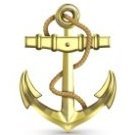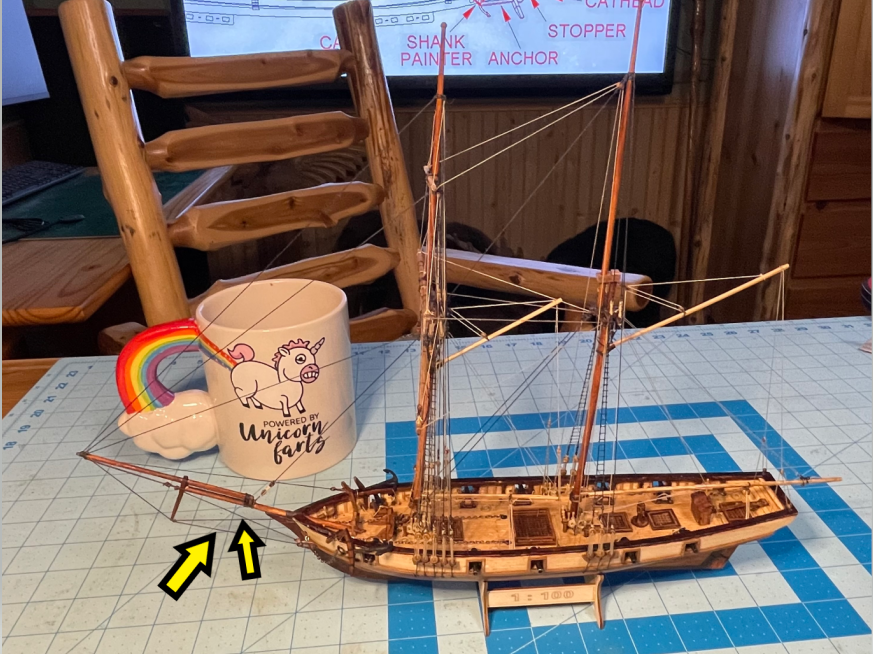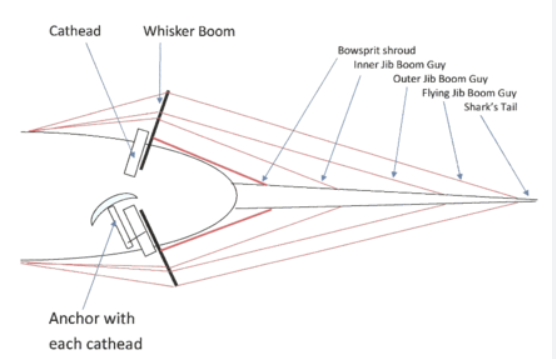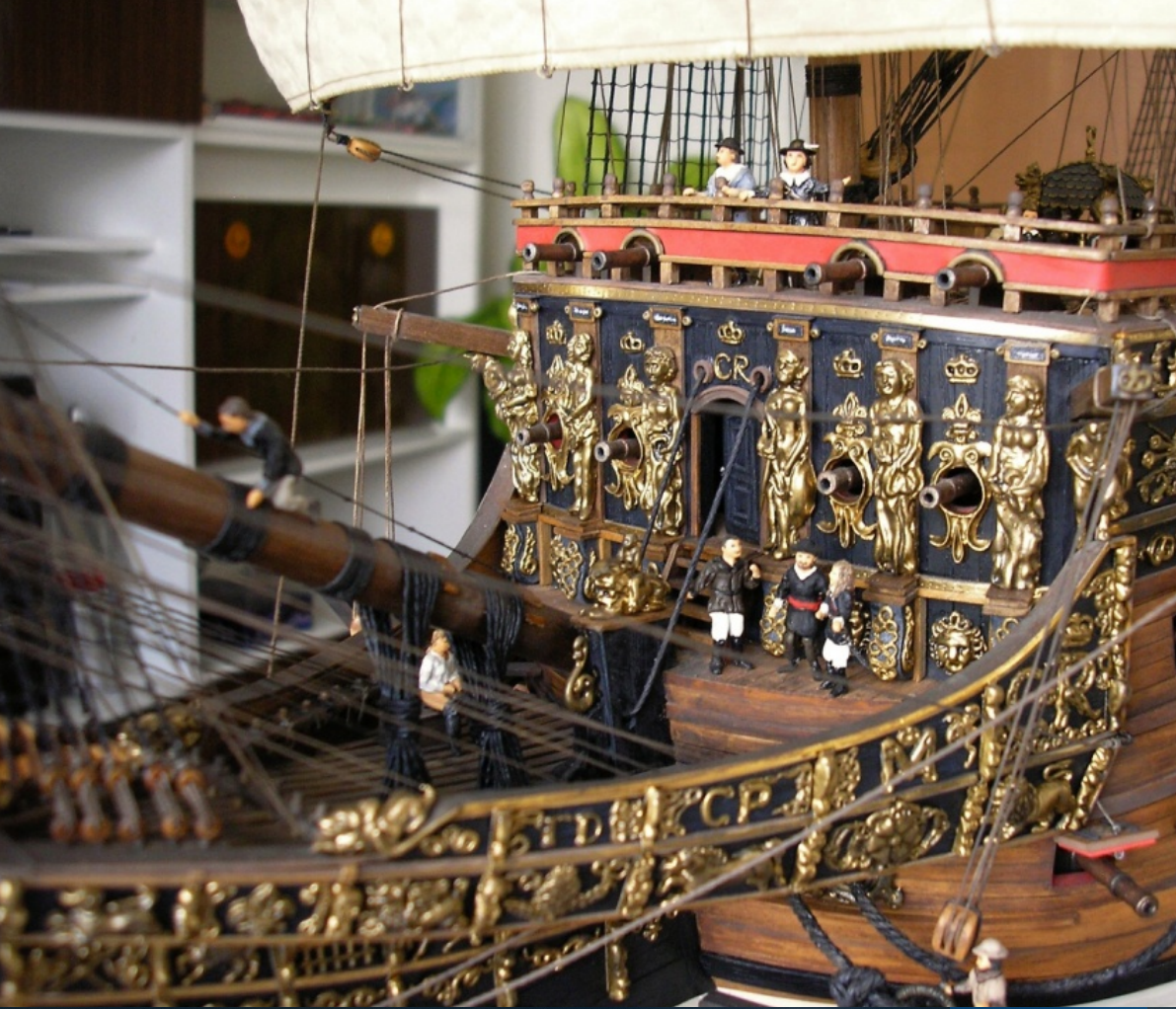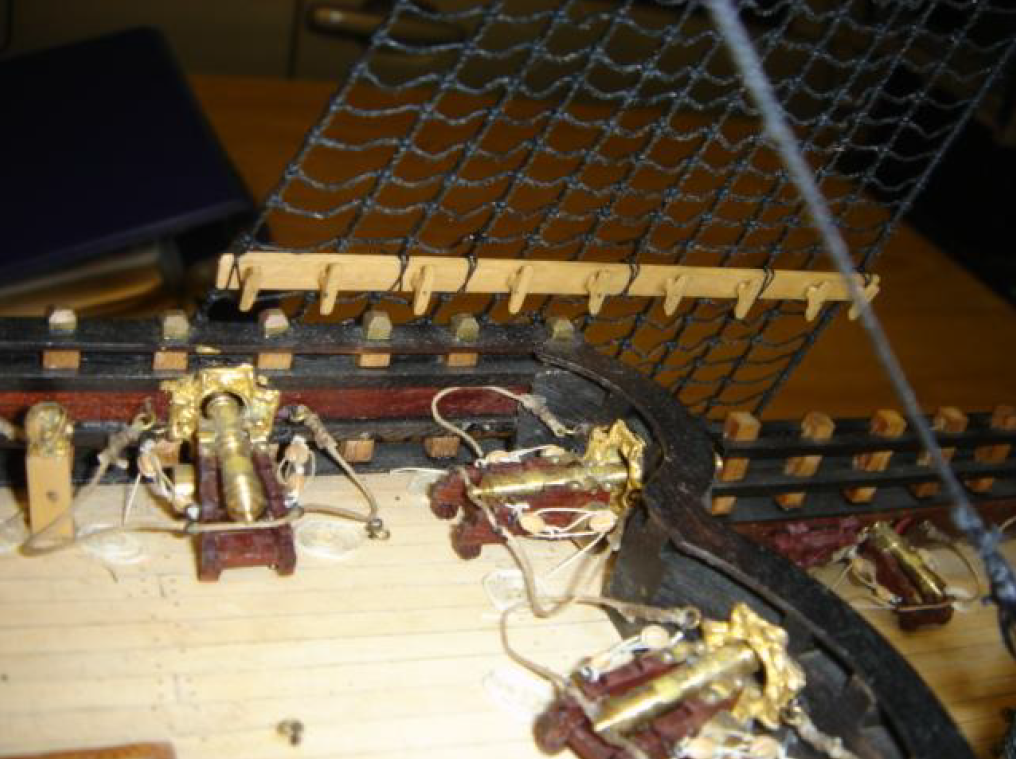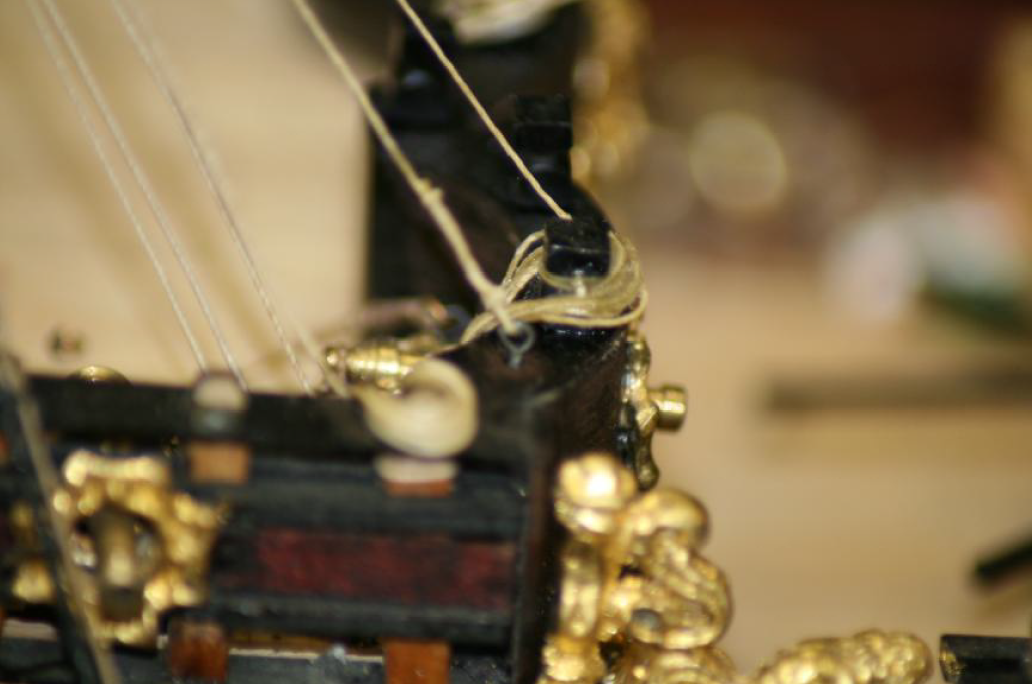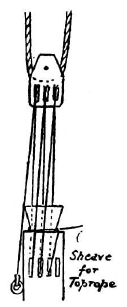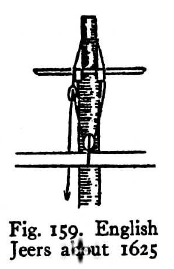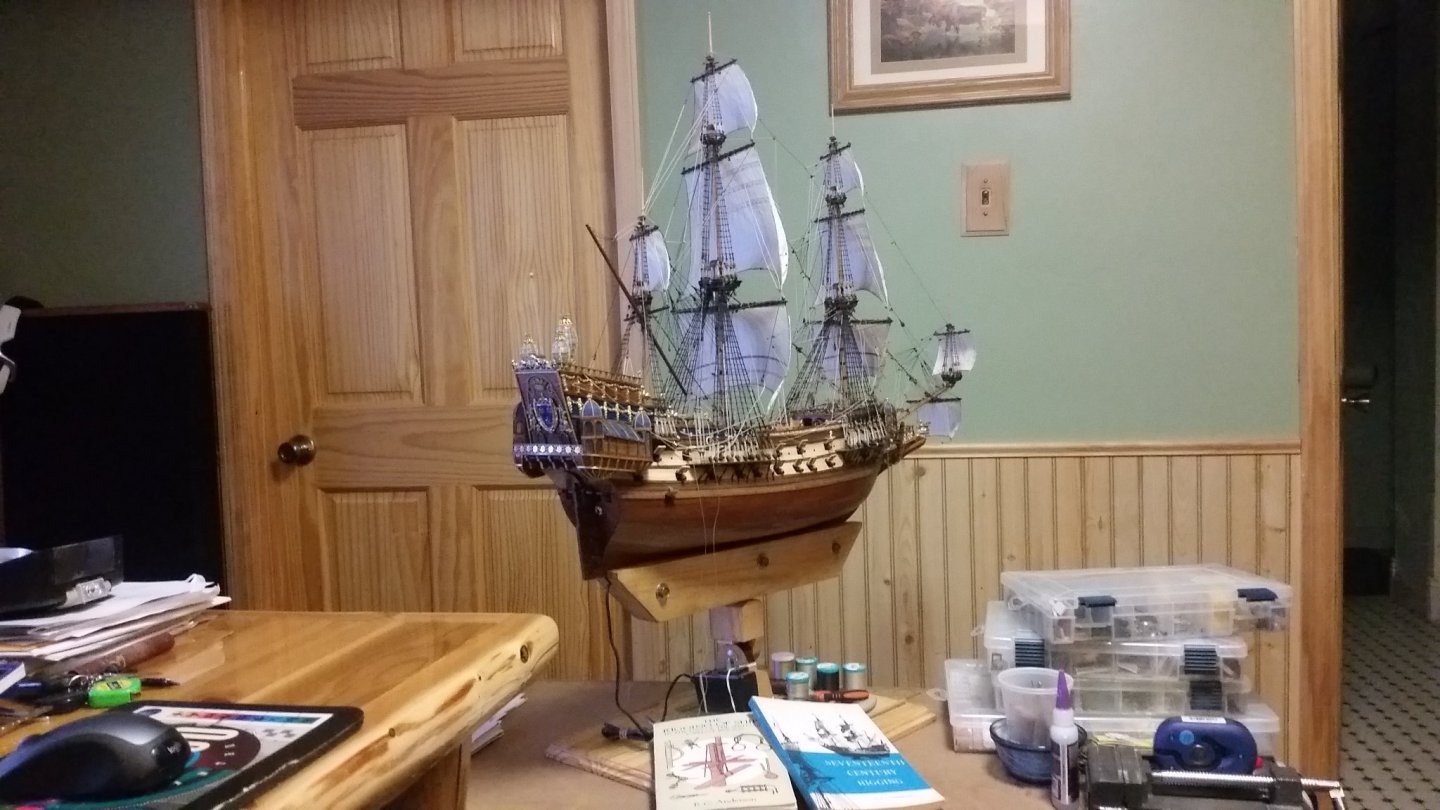-
Posts
123 -
Joined
-
Last visited
-
 DARIVS ARCHITECTVS reacted to a post in a topic:
La Couronne 1637 by Greg Davis - Corel - 1:100 scale
DARIVS ARCHITECTVS reacted to a post in a topic:
La Couronne 1637 by Greg Davis - Corel - 1:100 scale
-
 DARIVS ARCHITECTVS reacted to a post in a topic:
Sovereign of the Seas by 72Nova - Airfix - PLASTIC
DARIVS ARCHITECTVS reacted to a post in a topic:
Sovereign of the Seas by 72Nova - Airfix - PLASTIC
-
 DARIVS ARCHITECTVS reacted to a post in a topic:
Revenge 1577 by Loracs - Amati - 1:64
DARIVS ARCHITECTVS reacted to a post in a topic:
Revenge 1577 by Loracs - Amati - 1:64
-
 DARIVS ARCHITECTVS reacted to a post in a topic:
Revenge by drobinson02199 - FINISHED - Amati
DARIVS ARCHITECTVS reacted to a post in a topic:
Revenge by drobinson02199 - FINISHED - Amati
-
 DARIVS ARCHITECTVS reacted to a post in a topic:
Apostol Felipe by travis - OcCre - 1/60
DARIVS ARCHITECTVS reacted to a post in a topic:
Apostol Felipe by travis - OcCre - 1/60
-
Me too. I'm a huge fan of early 17th century ships. They were ornamental and had complicated rigging, so they make for pretty models. When ships advanced in design, they became so utilitarian that from a distance, they all seem to look alike. It's difficult to make accurate and detailed models of 17th century ships because of the limited historical information, but we still like to make models of them.
-
 DARIVS ARCHITECTVS reacted to a post in a topic:
Chris Watton interview
DARIVS ARCHITECTVS reacted to a post in a topic:
Chris Watton interview
-
 DARIVS ARCHITECTVS reacted to a post in a topic:
Chris Watton interview
DARIVS ARCHITECTVS reacted to a post in a topic:
Chris Watton interview
-
 DARIVS ARCHITECTVS reacted to a post in a topic:
Chris Watton interview
DARIVS ARCHITECTVS reacted to a post in a topic:
Chris Watton interview
-
Imagine what Chris could do with HMS Sovereign of the Seas...
-
 DARIVS ARCHITECTVS reacted to a post in a topic:
Prins Willem by _SalD_ – Corel - Scale 1:100
DARIVS ARCHITECTVS reacted to a post in a topic:
Prins Willem by _SalD_ – Corel - Scale 1:100
-
I'm confused why Don states that bowsprit shrouds and bobstays were not used on SotS. Bowsprit shrouds are not to be confused with the shrouds for the bowsprit topmast. Bowsprit shrouds on modern yachts run from the bowsprit to the hull on either side of the vessel, and prevent the bowsprit from bending to port or starboard. Typically the aft end of the shroud is attached to the hull using a thimble and shackle to an eye bolt which goes through a chain plate that is bolted to the hull. Take a look at my model of the Halcon of 1840. There are two bowsprit supports on each side of the bowsprit. One "guy" line starts at the tip of the bowsprit and runs to the dolphin striker where it splits into two guys which have tackles attached in turn to the hull (large arrow). The other is a bowsprit shroud that runs from a collar at the base of the dolphin striker and runs to a tackle on either side of the hull, near the guy tackle (small arrow). So, yes, SotS did not have bowsprit stays. As to where the bowsprit running rigging was belayed, that is unknown. Doris Obručová's model has a belaying pin rack located on either side of the beakhead (below). Perhaps there were cleats on the deck or railings or kevels on the inboard sides of the beak. We don't know. Vasa had a pinrail on the beakhead deck. Don Dressel rove running rigging lines through blocks fastened to the gammoning, and then up to the forward railing on the forecastle on his model, or directly from the blocks attached to the bowsprit, located foward of the spritsail yard but behind the bowsprit top, rearward to the forecastle railing.
- 321 replies
-
- Sovereign of the Seas
- Airfix
-
(and 1 more)
Tagged with:
-
SotS had old style rigging. Don Dressel stated that SotS had both jeers AND ties and halliards, which is unusual. It is not stated whether jeers and ties/halliards were both used on the same yardarm, which seems redundant to me, but a single yard would have jeers OR ties/halliards. James Sephton also believes both jeers and ties/halliards were probably used on SotS. The fact that other aspects of the rigging were old lends weight to the conclusion that ties and halliards were used for at least some yard rigging of the yards on SotS, instead of heers for all yards. Perhaps jeers were only used on the lighter yards. I do not know, but this seems logical. Payne's engraving shows ties and lanniards being used for the fore and main course sails. Sometimes a ship's features can only be determined by context clues. Some older style rigging arrangements used on SotS are shown below. Which lines were belayed to where is lost to history fort this ship, however there are clues in Payne's engraving, which shows the typical rigging for a large ship at the time, but does not depict the actual rigging used on SotS because it was engraved before the actual ship was rigged. It's all the info we have. Some belaying points may be deduced from the engraving. Payne's engraving has several shortcomings, including the fact that it does not show parrels for the heaviest yards and lateen yard on the mizzenmast. We have to take our clues were we find them and let them guide our guesses. Shroud cleats Hitched to railings at the timberheads Fore course yard tie is looped from yard to block to yard, with halliard rove through the block This sketch from Robert C. Anderson suggests that jeers using single sheave blocks would have been used on lighter yards higher up than the course yards, and evidenced by his drawing of the crosstrees. So, perhaps ties and halliards were reserved for the heaviest yards, pehaps including the topsail yards. SotS may not have employed belaying pins, but lines were belayed to deck rings, railings, and kevels. Rigging_Techniques HMS SotS.pdf
- 321 replies
-
- Sovereign of the Seas
- Airfix
-
(and 1 more)
Tagged with:
-
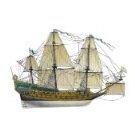
Whats the best book on rigging for a beginner?
DARIVS ARCHITECTVS replied to Stuka's topic in Masting, rigging and sails
Forum build logs are a good source and the least expensive (free) for details such as knots, splices, worming, and other techniques. When ask a general question about rigging, it is hard to answer without more specifics. First, what time period are you asking about, and what nationality is the vessel? This narrows things down a bit. Some books focus on rigging styles from certain eras, most commonly the 18th century. Using a source out of time period or nationality will steer you in he wrong direction. English and European continental styles of rigging are the two largest classifications for rigging style by region. For the 17th century, The Rigging of Ships: in the Days of the Spritsail Topmast, 1600-1720 by R.C. Anderson covers multiple nationalities. For the 18th century, The Art of Rigging by George Biddlecombe has lots of detail on knots, splices, seizes, and other methods of tying, hitching, and binding. As previously mentioned, The Rigging of Period Ship Models : A Step-By-Step Guide to the Intricacies of Square-Rig and Rigging Period-Fore-and-Aft Craft by Lennarth Petersson offer a pictorial way of showing you how lines are routed on specific 18th century vessels which provide example of how lines are routed and belayed. You want to shop for books that cover your vessel of interest as close as possible in order to rig your model as historically accurate as possible, using educated guesses where required instead of wild guesses. The shotgun approach of buying books is wastefully expensive. If you need to know what a particular book contains as far as information, it costs nothing to ask other forum members who own such books what is in them. When buying books, shop around. The kindle electronic versions are very inexpensive if you don't mind reading off your computer or cell phone, but the photographs suffer detail and quality significantly. Books specific to certain classes of vessels like the ones available from SeaWatch are very expensive, but if your model falls within their scope and you want the most and best information on a vessel, they are worth the money. I hope you find that there are few pieces of useful information in my ramblings. -
Hi Allen! Only two single blocks? Oh well. I just rigged almost 100 of the guns on three decks with a single and double blocks for the gun tackles. Knowing that earlier would have save me a lot of work! A fellow ship modeler (Szkutnik on the SoS forum) made 3-D models of the barrels and printed them out for me. They are detailed enough to have the touch hole and emblem on top recognizable as John Browne's work specific to the Sovereign of the Seas.
About us
Modelshipworld - Advancing Ship Modeling through Research
SSL Secured
Your security is important for us so this Website is SSL-Secured
NRG Mailing Address
Nautical Research Guild
237 South Lincoln Street
Westmont IL, 60559-1917
Model Ship World ® and the MSW logo are Registered Trademarks, and belong to the Nautical Research Guild (United States Patent and Trademark Office: No. 6,929,264 & No. 6,929,274, registered Dec. 20, 2022)
Helpful Links
About the NRG
If you enjoy building ship models that are historically accurate as well as beautiful, then The Nautical Research Guild (NRG) is just right for you.
The Guild is a non-profit educational organization whose mission is to “Advance Ship Modeling Through Research”. We provide support to our members in their efforts to raise the quality of their model ships.
The Nautical Research Guild has published our world-renowned quarterly magazine, The Nautical Research Journal, since 1955. The pages of the Journal are full of articles by accomplished ship modelers who show you how they create those exquisite details on their models, and by maritime historians who show you the correct details to build. The Journal is available in both print and digital editions. Go to the NRG web site (www.thenrg.org) to download a complimentary digital copy of the Journal. The NRG also publishes plan sets, books and compilations of back issues of the Journal and the former Ships in Scale and Model Ship Builder magazines.


